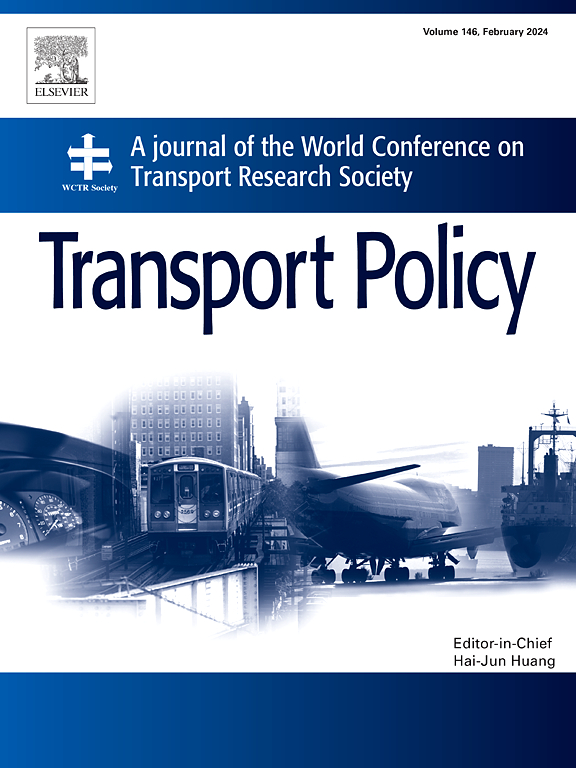Reformed planning process for transport justice: The experiment of FlexRide Milwaukee
IF 6.3
2区 工程技术
Q1 ECONOMICS
引用次数: 0
Abstract
Transportation planning researchers have been advocating for reformed planning processes that feature meaningful engagement of underrepresented stakeholders. Nevertheless, little research has experimented with a reformed planning process in a scientifically designed way, let alone examining the actual outcomes of such a process. The research team had a rare opportunity to plan, implement, and evaluate a new transportation service called FlexRide Milwaukee, which aims to connect workers from inner-city Milwaukee neighborhoods with suburban jobs. The planning process allowed two stakeholder groups—inner-city labor force participants and suburban employers—to drive two service designs. Pilot outcomes showed that the service preferred by the labor force participants attracted significantly more users than the service initially preferred by suburban employers. The experiment revealed the gap between users’ actual travel demand and factors typically prioritized in conventional transportation decision-making processes. Results have important policy implications by demonstrating the positive impacts of empowering underrepresented stakeholders in the planning process and shedding light on opportunities and challenges of improving transport justice through such a process.
交通公正的改革规划过程:密尔沃基FlexRide的实验
交通规划研究人员一直在倡导改革规划过程,使代表性不足的利益相关者有意义地参与其中。然而,很少有研究以科学设计的方式对改革后的规划过程进行试验,更不用说审查这种过程的实际结果了。研究团队有一个难得的机会来规划、实施和评估一项名为FlexRide Milwaukee的新交通服务,该服务旨在将密尔沃基内城社区的工人与郊区的工作联系起来。规划过程允许两个利益相关者群体——城市内部的劳动力参与者和郊区的雇主——推动两种服务设计。试点结果表明,劳动力参与者首选的服务比郊区雇主最初首选的服务吸引了更多的用户。实验揭示了用户的实际出行需求与传统交通决策过程中通常优先考虑的因素之间的差距。研究结果显示了在规划过程中赋予代表性不足的利益攸关方权力的积极影响,并揭示了通过这一过程改善运输公正的机遇和挑战,因此具有重要的政策意义。
本文章由计算机程序翻译,如有差异,请以英文原文为准。
求助全文
约1分钟内获得全文
求助全文
来源期刊

Transport Policy
Multiple-
CiteScore
12.10
自引率
10.30%
发文量
282
期刊介绍:
Transport Policy is an international journal aimed at bridging the gap between theory and practice in transport. Its subject areas reflect the concerns of policymakers in government, industry, voluntary organisations and the public at large, providing independent, original and rigorous analysis to understand how policy decisions have been taken, monitor their effects, and suggest how they may be improved. The journal treats the transport sector comprehensively, and in the context of other sectors including energy, housing, industry and planning. All modes are covered: land, sea and air; road and rail; public and private; motorised and non-motorised; passenger and freight.
 求助内容:
求助内容: 应助结果提醒方式:
应助结果提醒方式:


